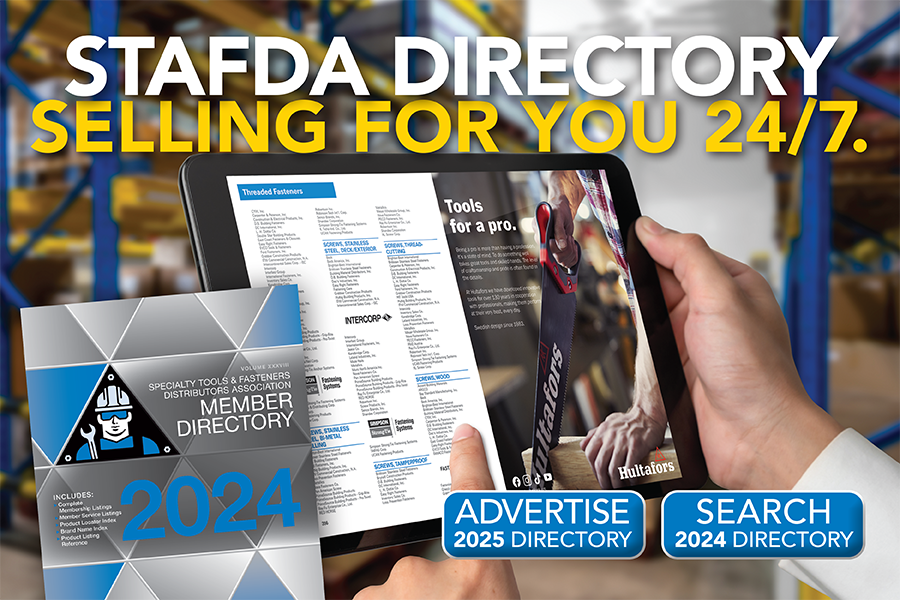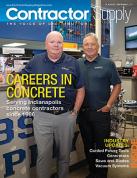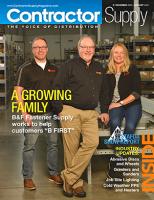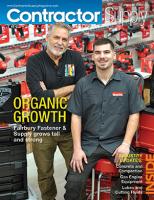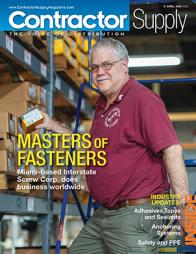Safe and Sound
Establishing hearing conservation in the workplace.
A manufacturing plant employee struggles to hear during normal conversations and experiences a slight ringing in his ears after leaving work. He does not address the issue with his safety director or supervisor, rationalizing that he is just “getting older.” Eventually, he realizes he has suffered permanent hearing loss.
Excessive noise and its negative effects are frequent job site problems. According to the Centers for Disease Control and Prevention (CDC), occupational hearing loss is the most common work-related injury in the U.S., with more than 22 million employees being exposed to unsafe levels each year. And without a way to reverse hearing loss, damage to ears can easily progress to the point of interfering with everyday tasks and activities.
Given the noise exposure standards from the Occupational Safety and Health Administration (OSHA), it is important for employers to ensure all requirements are met to avoid fines and reduce occupational risks. Developing a comprehensive hearing conservation program (HCP) ensures that businesses take steps to encourage compliance and keep workers safe.
Risks of Occupational Noise Exposure
Sound, measured in decibels (dB), can cause noise-induced hearing loss (NIHL) when at or above 85 dB. NIHL is a permanent yet preventable hearing disorder caused either by a loud impulse sound, such as an explosion, or by long-term noise exposure. Environmental noise can also lead to temporary hearing loss and tinnitus, a ringing in the ears.
| Loud and Clear: Deciphering OSHA Restrictions |
|
Being aware of OSHA’s permissible noise exposures can help safety directors determine Permissible noise exposure Decibel Time |
For construction, manufacturing, utilities, food-processing and other noise-prone industries, experiencing noise above 85 dB is common. OSHA requires a hearing conservation program whenever noise exposures equal or exceed an eight hour time-weighted average sound level (TWA) of 85 dB. Daily permissible doses are also set in place (See “Loud and Clear: Deciphering OSHA Restrictions” sidebar).
NIHL and noise exposure present numerous risks and disadvantages for workers and their employers. Excessive noise is likely to cause annoyance and can lead to decreased worker productivity or job fulfillment; these issues may ultimately impact the products or services they deliver to their customers.
Employees may also have trouble hearing important warnings and signals, thereby jeopardizing their own safety and the well-being of co-workers. Additionally, those with hearing impairment may feel increased anxiety, stress and isolation. Because NIHL is often gradual, many people remain unaware of their impairment until later in life, when damage to the ear is substantial.
Occupational noise can also have a significant impact on overall business health. If a hearing test shows a Standard Threshold Shift (STS)—an average change of 10 dB or more from a baseline (initial) test— this must be noted on an employer’s Form 300A, or OSHA recordable injury log. OSHA fines can also be given for failing to provide hearing protection when noise exposure exceeds 85 dB TWA.
Lastly, employees may also file workers’ compensation claims or lawsuits against employers. For example, in the 2010 verdict of Becker v. Murphy Oil, the oil refinery company was required to pay a total of $250,000 to five former employees and currently faces more than 30 additional lawsuits related to NIHL.
Implementing a Hearing Conservation Program
Providing workers with a comprehensive hearing protection program is essential in the prevention of hearing loss and damage. These programs offer employers a strategic plan for managing hearing protection and ensure employees receive hearing protection devices, hearing testing, training and consultation. You can follow these steps to help your customers (and your own company) create a compliant and successful program:
1. Conduct Noise Monitoring: Have a second party, such as a safety equipment provider or insurance company, conduct a sound survey to assess workplace noise levels. If an 8-hour TWA meets or exceeds 85 dB, a hearing conservation program is mandatory. In some cases, noise can be reduced by using loud equipment when fewer people are working, limiting the length of time individuals are exposed to loud noise sources, working with low-noise tools and machinery and creating barriers to enclose noise.
2. Implement a Written Program: Take your program beyond compliance requirements by creating a set of guidelines. The written program should state that the hearing protection program is mandatory and outline step-by-step instructions for testing, training and consultation.
3. Provide Audiometric Testing: Audiometric evaluations must be done annually to assess hearing health, detect changes since prior tests and identify individuals at risk. Employees can have tests administered off-site at medical clinics or during work shifts through mobile testing units. Mobile units can accommodate employees onsite with quick and effective testing, training and counseling in one session. This eliminates the risks of employees traveling offsite during working hours, streamlines the process and provides an immediate method to compare prior results.
4. Perform Audiometric Data Analysis and Follow-Up: If an audiogram shows a shift in hearing, the employee must be informed in writing and outfitted with HPD’s (if these are not currently worn) or alternative HPD’s to ensure adequate protection and greater noise reduction. Look for a hearing testing supplier that will track worker history over time, as well as enable you to compare your employees versus industry and country averages.
5. Outfit Employees with Hearing Protection Devices: A variety of HPD’s can be selected to cater to employee comfort and an employer’s budget. These include corded and uncorded earplugs, reusable and disposable earplugs and earmuffs. Fitting employees with the correctly sized earplug is important to ease any discomfort that ill-fitting HPD’s may cause.
6. Provide Training and Consultation: Training should focus on the importance of a hearing conservation program as well as how to correctly wear and maintain equipment. Those new to HPD’s are usually unfamiliar with the way earplugs block noise; therefore, without training, employees may improperly wear equipment or remove it during conversations. Taking proper care of reusable earplugs is also essential since wax can build up and cause ear infections or discomfort. At a minimum, disposable earplugs should be thrown away after each shift.
7. Ensure Data Management of Records: Have records stored in a safe yet accessible place. OSHA requires that records be retained for 30 years, and must be available during an OSHA site visit. Ideally, safety directors will have online access to all test results, a feature that allows employers to access records across multiple locations, as well as to perform preventative analysis. Consider providing employees with a copy of their hearing test directly following the exam to increase compliance with the program.
8. Repeat Testing and Training Annually: OSHA requires hearing testing and training to be conducted once every year at a minimum. New employees must also receive a baseline test within their first six months. However, if an employer uses an onsite mobile testing solution, new employees are not required to be tested until the next regularly scheduled visit. Regular testing allows employers to document if any workers show an STS and can gauge the success of the program.
Educating employees about NIHL and noise exposure is vital to creating a safe work environment. Hearing loss can interfere with an individual’s quality of life and affect one’s ability to perform a job effectively. Workers’ compensation claims, lawsuits and recordable injuries related to hearing loss can also negatively affect a business’ bottom line. However, customized hearing conservation programs can help limit initial occupational hearing loss, preserve hearing and provide employees with applicable instructions and hearing equipment necessary for ear health. CS
Scotty Richardson is a Safety Advisor with Cintas’ First Aid and Safety division. Cintas delivers hearing protection equipment, hearing testing and hearing training via mobile occupational health screening units as part of a strategic alliance with Examinetics, Inc. For more information, please visit www.cintas.com or call 1-877-937-2811.




